November 10, 2015 | Posted in JAZZ | By Jason Sositko
Since 1955
An impossible task trying to come up with a list as subjective as the greatest modern jazz alb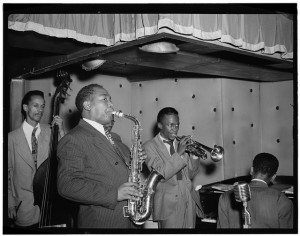 ums of all-time.
ums of all-time.
I decided to limit this list to “modern jazz” after 1955; I know this eliminates the be-bop era all together, especially those important sides Charlie Parker did for Savoy in 1945, “Now’s the Time” and the like.
Those were issued as singles and not side long albums, so I mention it here in the introduction, because almost all of this music below grew out of the well-spring of those 40’s Parker/Gillespie and or Parker/Miles Davis sides.
Below I have 2 undisputed albums on the list, that are pretty much etched in stone as all-time classics. The others however, are much more debatable.
*All album cover photos used with permission via Amazon.com*
Giant Steps: John Coltrane
Giant Steps probably was the one jazz album made other saxophonist quit the instrument all together. Sonny Rollins was the undisputed sax champion at the time, after Giant Steps, it was Coltrane.
Coltrane’s “Sheets of Sound” approach taken to its zenith and then some, any saxophonist worth their salt will have to come to terms with the stimulating chord changes of the title track.
“Giant Steps”, “Cousin Mary,” “Mr. P.C.,” and the ballad “Naima,” are all jazz standards, and they still sound modern 50 plus years later.
Pithecanthropus Erectus
Here’s a classic album from 1956. Pithecanthropus Erectus or (up right ape). It’s startling to me how modern and ahead of its time the sound. You might be surprised I chose this over Mingus Ah Um.
I almost included Theloneous Monk’s Brilliant Corners instead. Mingus though is more my cup of tea. Blues and Roots is actually my favorite Mingus album too, but Pithecanthropus Erectus really is ahead of its time.
I still have a hard time believing the music is from 1956, Mingus, who was an Ellington disciple, expands the swing and bop vocabulary to add elements of third stream and even avant-garde music.
When you listen to the title track, consider the album was recorded 3 years prior to Ornette Coleman’s The Shape of Jazz to Come.
The album would establish the “Mingus sound”, that sound reminiscent of a runaway freight train that some how returns to the station in one piece.
I love the way the title track, how it builds upon the same simple theme, then flourishes of modern sound effects punctuate the music.
The colors just shine through and really do sound modern for any time, the rawness of the recording is also of note, free wheeling and drenched in the blues.
Kind of Blue
Blue. Created in 1959, the album is sort of a summation of all the styles of jazz Miles participated in or helped to create up to that point.
I have always heard a distinct Birth of the Cool vibe within Kind of Blue, the Prestige hard bop blues based sound is there as well, and even the Gil Evans orchestrated music is touched upon. Kind of Blues best quality is its contemporary sound.
The music flows so effortlessly, nothing within Kind of Blue is above a medium tempo. “So What” struts along like a stroll down 52nd Street 1959, “All Blues” has always had an irresistible slow blues shuffle, “Blue in Green” a stark Bill Evans composition that offers some of Miles’ most stark and clear as a bell Harmon mute trumpet playing, the sound just exudes a desolate lonely landscape.
Each composition did away the typical chord changes of hard bop and bop, and allowed the soloist to create music freely with modes, modal concepts had been touched upon before.
Pianist George Russell particularly was a champion of the concept. Russel even wrote a book about of it called “Lydian Chromatic Concept of Tonal Organization”.
There is much conjecture just how much Miles may have been influenced by these concepts; as the concept had been brewing within jazz for many years. Either way, Kind of Blue is still the definitive use of the concept in my opinion. I do rather like Oliver Nelson’s “Stolen Moments” from his 1961 album The Blue and the Abstract Truth, that particular tune does remind me very much of the essence of Kind of Blue, while still being its own piece. Read more about that here.
Many jazz artists to come would expand on this modal jazz style, Oliver Nelson, John Coltrane (a side man on Kind of Blue), many hard bop artist like Jackie McLean and Lee Morgan also made use of this style to further advance hard bop by the end of the 60’s.
I love the Gil Evans arranged intro on “So What” that introduces the music. Tenor saxophonist John Coltrane and altoist Julian Cannonball Adderley have a contrast in sound that works magnificently. “Blue in Green” displays possibly the most heart piercing Harmon muted trumpet sound ever recorded. Has anyone sounded as “real” as Miles, before or since?
The Shape of Jazz to Come
The Shape of Jazz to Come 50 years later, it is hard to understand what all the fuss was about, as far as the out there sound and style. The music swings, the music is rooted in the blues, it’s definitely jazz, it certainly doesn’t sound all that avant-garde today.
In 1959, this was a big deal, and musicians and artists alike came to the New York clubs to see what the fuss was all about. The genius of the music lays in its elastic inside out approach, doing away with the piano player all together was sacrilege I suppose.
Coleman and trumpeter Don Cherry were allowed the freedom to play what ever they felt in their souls. The music is melodically based, not at all far out, as the avant-garde would get, and not at all like the militant free jazz of the late 60’s.
The Shape of Jazz to Come is Happy music, bubbling with creativity and innovation, its real historic validation is in the way it changed the norms inside the music.
Compared to today’s anything goes music, this music doesn’t seem too challenging, but it just may have opened the door for all the great music to come. Coleman’s own Free Jazz and Coltrane’s Ascension, even jazz rock artists owe it a debt of gratitude, from the freeing of the music from its limitations.
A Love Supreme
A Love Supreme could easily be considered the greatest modern jazz album of all time, it always seems to show up in everyone’s top 3 lists, usually right behind the undisputed modern jazz album Kind of Blue.
A love Supreme is not quite as easy of a listen as the Davis Masterpiece, Supreme has just the right amount of the freer sounds that Coltrane would go head long into after the album.
The Power of the music, the quartet interplay and earnest heart-felt saxophone playing drives the music to extreme heights.
A Love Supreme apparently had a profound effect as well on rock players of the era, Carlos Santana has mentioned: it was like Moses passing down the 10 Commandments.
Not that I jive with the metaphysical thing Santana talks about with A Love Supreme. I must say, that I have always felt, right from the first listen, something more was going on with the music than just music. I have commented in the past how I feel a warmth come upon me, mainly in that I see colors, oranges and yellows, perhaps a sun set or something? I hope that doesn’t sound too pretentious, but I can’t think of any other music that does that to this level?
The Coltrane quartet had already established a sound similar to A love Supreme, with Crescent, Coltrane, and Impressions; but the concept format, a devotional love theme for GOD, pushed the music to a deeper metaphysical level.
Believe it or not, a church was created because of this album with many followers to this day, such was the far-reaching effect this album, and John Coltrane had on people.
The Incredible Jazz Guitar of Wes Montgomery
The Incredible Jazz Guitar of Wes Montgomery is one LP I had been dying to get my hands on for years, at a reasonable price mind you. That is not an easy task, even lesser condition deep groove mono copies can sell for hundreds of dollars.
Wes has such a simple style, his use of octaves, A.K.A 2 part harmony is ingenious. Such a fluid style that complements the single note runs.
A lot of people knock the supporting band on this recording, but I don’t consider them inferior at all, I at no time find myself wishing for Bud Powell or Oscar Peterson. Tommy Flanagan does a nice job, and the heath brothers lay down a pretty tight groove.
It might have been interesting if Jimmy Heath was on hand, but Wes does more than enough to keep ones interest, “Four on Six” is easily my favorite track on the album, I just love the Ominous feel of the intro.
One sad thing for me is: In my opinion, Incredible Jazz Guitar is the pinnacle of Wes Montgomery’s career, Full House and Smokin’ at the Half Note are very close seconds; but I don’t feel anything eclipses this album, and certainly the music he recorded for A&M was nothing close to groundbreaking.
With The Incredible Jazz Guitar of Wes Montgomery, he did cement himself as a Jazz-guitar legend.
Related posts at Spacial Anomaly
Table of Contents
Jason Sositko
Jason Sositko, a freelance writer and entrepreneur is a participant in the Amazon Services LLC Associates Program, an affiliate advertising program designed to provide a means for sites to earn advertising fees by advertising and linking to Amazon.com. I also use services such as Viglink and Skimlinks to earn income via links placed inside articles.
Leave a Reply
*






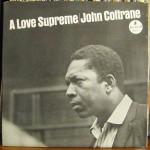
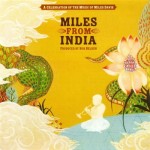
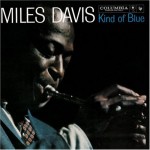
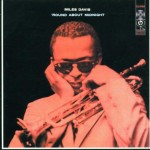








Be the first to comment.